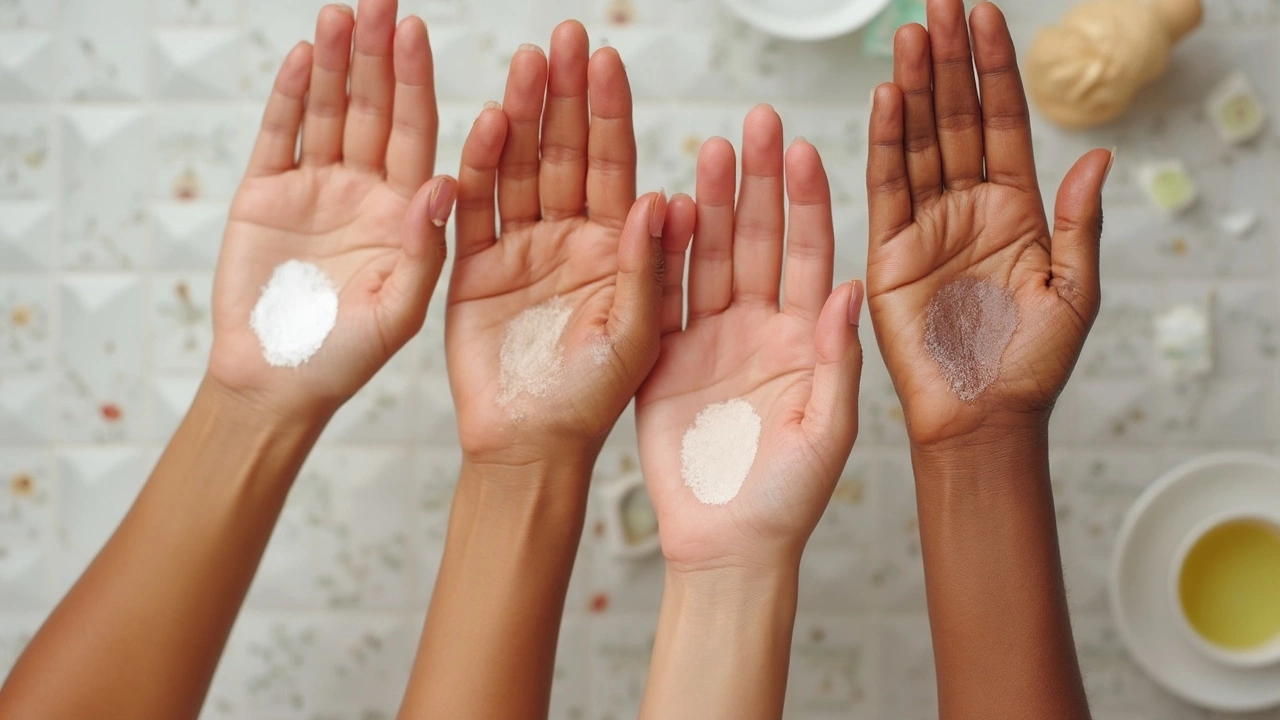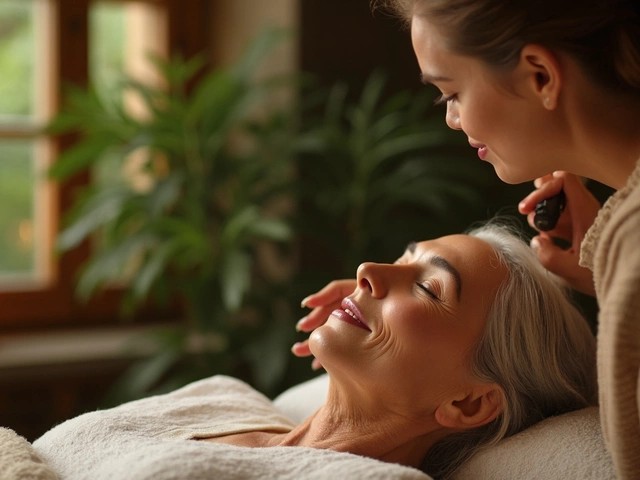If you grab a bottle of lotion every time your skin feels dry, you're definitely not alone. But ever wondered if that humble lotion actually counts as a cosmetic? Turns out, a lot of people aren't sure, and the answer can surprise you.
In the world of personal care, "cosmetic" doesn't just mean makeup or fancy face creams. The truth is, according to regulations in most countries, any product you put on your body to clean, protect, or change the way you look—including your skin's feel—typically falls under the cosmetic umbrella. That means yes, lotion is a cosmetic. It's designed mainly to make your skin look and feel better, rather than treat medical conditions.
- What Makes Something a Cosmetic?
- Where Lotion Fits In
- Types of Lotion and Their Uses
- Tips for Picking and Using Lotion
What Makes Something a Cosmetic?
If you’re thinking about what counts as a cosmetic, it’s actually simpler than you might think. The Food and Drug Administration (FDA) in the US says a cosmetic is anything you use on your body for cleaning, beautifying, promoting attractiveness, or changing the way you look. This covers a whole bunch of things—lipstick, shampoo, body wash, deodorant, and yes, even your everyday lotion.
So, what’s not a cosmetic? Anything that’s meant to treat or prevent a disease, like acne creams or medicated shampoos, takes a different route. Those usually fall under drugs and have stricter rules.
Here’s an easy way to think about it:
- If you put something on your skin or hair just to make it look, smell, or feel better, it’s a cosmetic.
- If you’re using something to heal, cure, or prevent a specific skin issue, you’re looking at a drug or medicine.
This line can get fuzzy sometimes. Take anti-dandruff shampoo, for example. It cleans your hair (cosmetic), but it also treats dandruff (drug). That’s why some products are labeled as both—a fun little loophole in the law!
The takeaway? If the main goal is to make you look or feel nicer, chances are you’ve got a cosmetic in your hand. That includes all sorts of products you use every day, probably without even thinking about it.
Where Lotion Fits In
So how does lotion actually fit into the whole cosmetic lineup? It’s right up there with classics like shampoo, deodorant, and face wash. The reason is simple: lotion’s main job is to moisturize and smooth the outer layer of your skin, helping it look and feel better. It doesn’t change your skin’s natural functions or structure—so it’s not considered a drug unless it promises to treat something like eczema.
The official line from health agencies like the FDA in the US and the EU’s cosmetic rules is pretty clear. Anything that’s meant just to cleanse, beautify, or keep your skin in good shape (without promising to cure anything) falls into the cosmetic group. Check your lotion’s bottle and you’ll usually see it says ‘body moisturizer’ or ‘skin softener’—not a treatment for a medical problem. That’s a giveaway.
Some lotions mix in extras like sun protection or anti-aging additives. These can push them partly into the “drug” category, too, depending on their claims. If your lotion says it prevents sunburn, that’s technically both a cosmetic and an over-the-counter drug. But if it just boosts hydration, it’s 100% cosmetic.
Lots of brands try to walk a fine line because regulations can get pretty strict—especially in the US, Canada, and Europe. It’s a big reason why most lotions promise to improve the look and feel of your skin, not to actually change how your skin works.

Types of Lotion and Their Uses
Lotion isn’t just lotion—there are all kinds depending on what your skin needs. You’ll see terms like hand lotion, body lotion, face lotion, and even more targeted ones like after-sun and medicated lotions when you check the drugstore shelf. Each type works a bit differently, and knowing the difference can actually save your skin (and your money).
Here’s a quick rundown of the most common types and how they work:
- Body lotion: This is the most basic kind and usually less greasy, meant to cover large areas. It works well for normal to slightly dry skin and can be used daily after showering.
- Hand lotion: Hands get washed, dried, and exposed a ton, so these formulas are usually richer and soak in fast. If you work with your hands or wash them a lot, hand lotion is a lifesaver.
- Face lotion: The skin on your face is thinner and more sensitive, so these lotions are lighter, often non-comedogenic (won’t clog pores), and may have SPF or extra vitamins. Always check that a face lotion suits your skin type—oily, dry, or sensitive.
- Medicated lotion: These aren’t just about moisture—they’re a mix of cosmetic and medical, often for eczema, psoriasis, or really dry skin. Look for ones with ingredients like urea, salicylic acid, or hydrocortisone, but ask your doctor before using anything medicated for long.
- After-sun lotion: Packed with soothing and cooling ingredients like aloe, these help skin recover if you’ve had too much sun.
If you’re a numbers person, here’s a handy table with some key features found in popular lotions:
| Lotion Type | Main Purpose | Common Ingredients | Unique Feature |
|---|---|---|---|
| Body Lotion | Everyday hydration | Glycerin, shea butter | Spreads easily, good for big areas |
| Hand Lotion | Targeted repair | Dimethicone, lanolin | Richer, absorbs quickly |
| Face Lotion | Light moisture, non-irritating | Hyaluronic acid, niacinamide | Non-comedogenic options |
| Medicated Lotion | Treat skin conditions | Urea, salicylic acid, steroids | Doctor recommended |
| After-sun Lotion | Soothing after sun exposure | Aloe vera, allantoin | Cooling, calms irritation |
The bottom line: not all lotions are created equal. Pay attention to the label and think about where and when you’ll use it. It’s easy to just grab whatever smells nice, but your choice should fit your skin’s needs and routine. And just so you know, using the right lotion can do a lot more than just make your skin feel soft—it actually helps maintain your skin’s protective barrier.
Tips for Picking and Using Lotion
You want your lotion to actually do its job, not just sit on your shelf looking pretty. Here’s how to pick the right one and use it the smart way.
- Check the ingredients: Dry, sensitive, or oily skin? Read the label. Glycerin and hyaluronic acid lock in moisture for dry skin, while lightweight lotions with "non-comedogenic" on the label are better for oily or acne-prone faces. Shea butter and ceramides are winners for healing super dry patches.
- Go fragrance-free when in doubt: Fragrances can be irritating, especially if your skin gets red or itchy easily. If your skin ever stings after using a scented lotion, switch to a fragrance-free one. It’s safer for people with allergies, too.
- Think about the season: Thicker creams do wonders in winter, but they might feel greasy in summer. In warmer weather or humid climates, stick to lighter, fast-absorbing formulas.
- SPF for daytime: If you’re slathering up in the morning, using a lotion with built-in SPF saves a step and actually protects you. Not all lotions have it, so check the label and aim for at least SPF 30 if you’ll be in the sun.
- Apply right after showering: The golden rule? Put lotion on when your skin is still slightly damp. It helps trap water and keeps your skin hydrated longer. Don’t towel off completely before rubbing it in.
- Patch test new products: Tried a new lotion and broke out or got itchy? Always do a small test on your arm before using a new product all over. Saves you from a face-full of regret.
Chances are you’ll see better results if you use your lotion regularly, not just when your skin is already dry and flaky. And don’t forget places like your elbows, knees, and hands—they usually need the most help.


